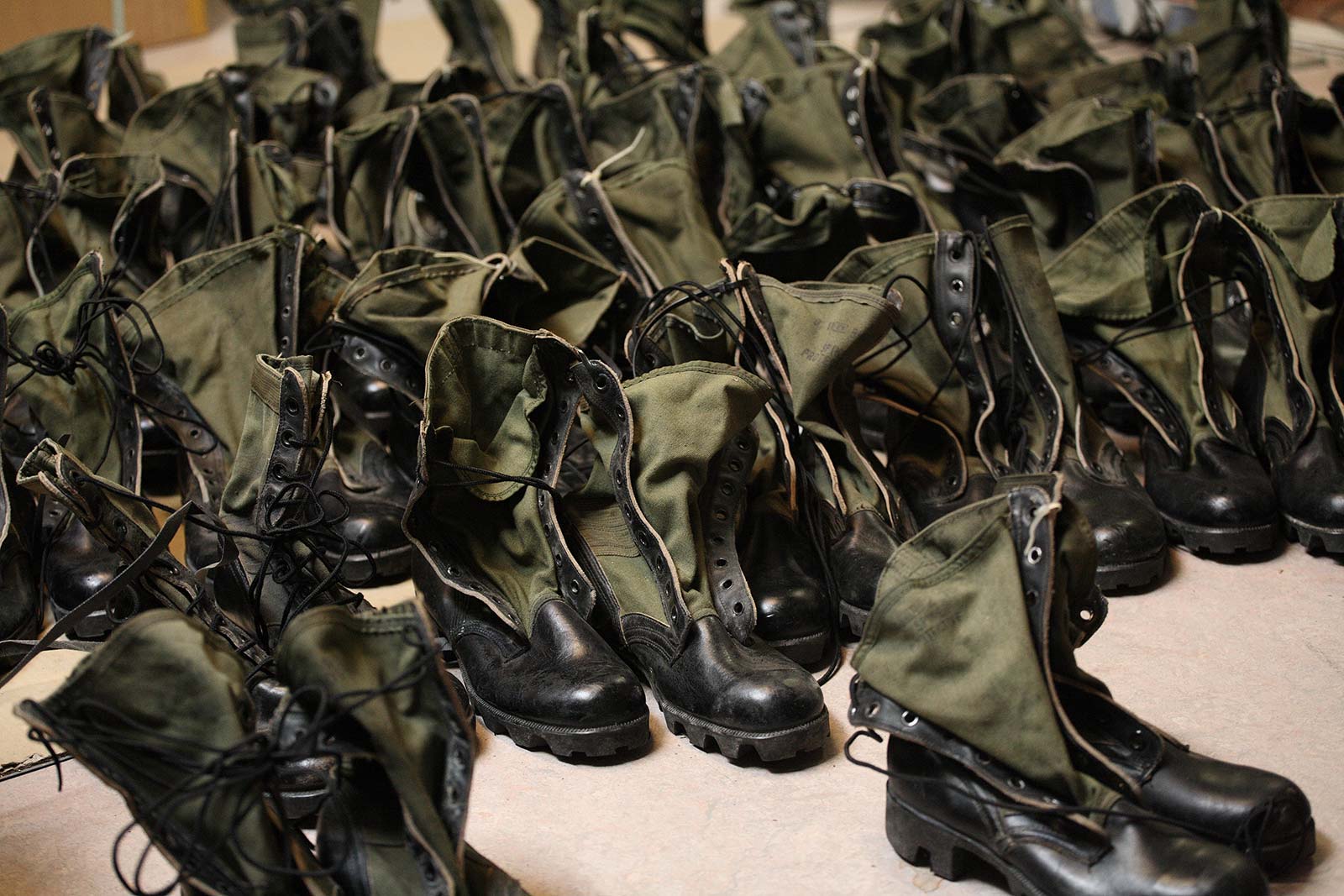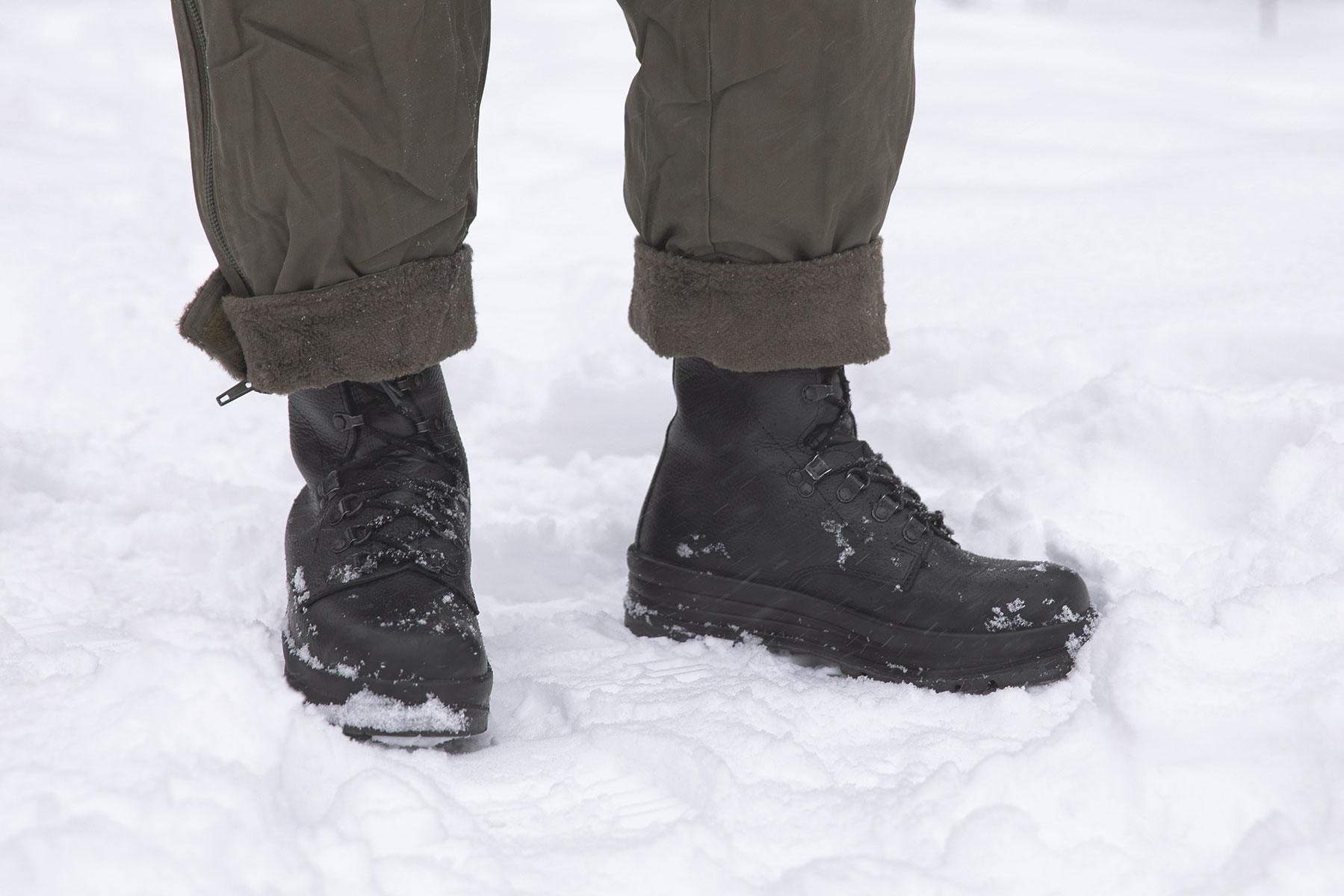
How to Choose the Best Military Surplus Boots for All Terrains
How to Choose the Best Military Surplus Boots for All Terrains
Whether you're trekking through a misty bog, working at rugged job sites, or just casually chilling in an urban setting, military surplus boots will serve you well. Budget-friendly and built to last, these boots offer durability and reliability that few other types of footwear can match.
This article will help you put your foot down in the best military surplus boots for all terrains and conditions. You'll also find valuable tips on what to look for in your next pair of army surplus boots.
Understanding the Benefits of Military Surplus Boots
Military surplus boots offer a range of benefits that make them an excellent choice for various activities. One major advantage is their cost-effectiveness, as these boots are often available at a fraction of the price compared to new, high-end tactical footwear.
The durability and reliability of military surplus boots can't be overstated either. Built to withstand harsh conditions and heavy use, these boots have been field-tested by soldiers in real-world conditions, proving their dependability over time.
Versatility also sets military surplus boots apart from their civilian counterparts. Whether you need footwear for hiking, work, or tactical purposes, these boots can handle different tasks, landscapes, and climates with ease.
Step One: Determining the Specific Needs For the Boots
Pace
When choosing military surplus boots, the pace at which you walk or run significantly impacts the selection process. If your hiking trips involve a lot of running, opt for lower, lightweight boots, such as ankle boots. For walking, comfort and fit are paramount, so look for boots with ample cushioning, arch support, and a snug fit.
Type of Terrain
Considering the specific terrain you will encounter and the challenges it poses is vital when shopping for military surplus boots, as different types of boots excel in different environments. For example, rocky environments require boots with sturdy, thick soles and rigid construction, as these features provide excellent traction in this challenging terrain. For those looking for proper ankle support, newer combat boots are the way to go.
Climate and Weather Conditions
Matching your boots to specific climates and weather conditions ensures you get the best performance out of them. Wet conditions require waterproof features to keep your feet dry, while hot climates need breathable materials to prevent overheating. Cold weather demands insulation for warmth without sacrificing mobility.
Step Two: Finding the Right Type of Military Surplus Boot
Standard Issue Combat Boots
Standard issue combat boots are designed for rigorous activities and varied terrains where durability is essential. Usually made from thick leather and synthetic materials, they often feature a durable, thick outsole along with reinforced toes, providing excellent traction and protection in challenging environments.
Jungle Boots

Jungle boots excel in jungles, swamps, and other humid and wet environments. They typically use materials like canvas or nylon combined with leather, offering breathability while maintaining durability. Key design elements include drainage holes that allow water to escape quickly, preventing soggy feet and related conditions during extended wear.
Desert Boots

Desert boots, sometimes known as summer boots, are perfect for hot and arid climates, as their construction focuses on heat dissipation through breathable linings made from lightweight materials such as suede or fabric mesh. This helps keep your feet cool even under intense sun exposure.
Winter Boots

Winter boots come equipped with insulation and waterproofing features essential for extreme cold environments. They usually feature thick, well-insulating soles to prevent the cold from creeping in from the frozen ground. These elements protect against harsh temperatures by retaining warmth inside the boot while keeping moisture out.
Gaiters are a great addition to winter boots, as combining these two items prevents snow from getting into the shoe even when trekking through very deep snow.
Ankle Boots

Ankle boots are a lighter and less restrictive variant of full-length combat boots, allowing for greater freedom of movement while providing essential support to the ankles. These boots are a versatile option suitable for both urban and rugged natural settings, as well as for everyday wear and training.
Step Three: Key Features to Look For
Material and Construction
Military surplus boots most commonly use high-quality leather for its excellent protection and longevity, and canvas for the breathability and flexibility it provides.
Additionally, boots with double or triple stitching are known to be more sturdy as these additional layers of stitching help the seams withstand wear and tear better compared to boots with single stitching.
Durability and Protection
Military boots are always durable to begin with, since soldiers need to rely on them in harsh conditions. Even still, it's better to be safe than sorry, so when buying military boots, look for features like reinforced heels and toes, which provide extra protection against impacts and rough terrain. Assessing robustness involves checking the sole attachment method as well—boots with stitched soles generally offer more durability compared to glued ones. Properly stitched soles can also be replaced, which improves longevity.
Comfort and Breathability
Comfort should never be overlooked, especially if you'll be wearing the boots for extended periods. Military surplus boots don't usually come with insoles, and even when they do, they're often quite worn. Your best bet is to replace them, as cushioned insoles can significantly enhance comfort by providing additional support during long walks or hikes.
Breathable materials are equally important, as they allow air circulation inside the boot, reducing sweat buildup and overheating. Ankle support is another feature that adds stability, preventing injuries on uneven ground.
Traction
Good traction and grip keep you steady on different surfaces, whether it's mud or rocky paths. Sole patterns play a big role here; rubber lug soles work well in a variety of environments. For example, the deep lugs on the soles prevent slipping and falling while walking on slippery surfaces, such as cliffs during rainfall.
Post Purchase: Military Surplus Boots’ Maintenance
Cleaning
Cleaning your military surplus boots regularly helps maintain their longevity. Start by removing any loose dirt with a soft brush. For tougher stains and more delicate materials, like GORE-TEX membranes, use a damp cloth or sponge with mild soap. Fabric and synthetic materials require different cleaners designed specifically for those types.
For leather boots, specialized cleaning products are recommended to preserve the material's quality. Products like saddle soap work well for deep cleaning without harming the leather. Polishing is another important measure in maintaining leather boots. Remember to clean and condition the boots before the process. To achieve the best results, match the polish to the color of the leather and use small, circular motions to apply it.
Avoid soaking the boots in water, as it can damage the materials, especially if the boots are not designed for wet conditions.
Storage
Storing your military surplus boots in a cool, dry place away from direct sunlight extends their lifespan by preventing material degradation.
Stuffing your boots with newspaper during storage helps maintain their shape and absorb any residual moisture inside them. This simple step prevents mold growth and keeps them ready for use when needed again.
Final thoughts
It's crucial to pick the right military surplus boots that work best for you as you trek through different types of terrain and weather conditions. First, you need to assess the terrain and weather conditions before selecting the appropriate type of boot for your needs. It's important to consider features like material quality, durability, comfort, water resistance, and traction before making a final decision.
Keeping your boots clean and stored correctly is also really important. It helps ensure they last a long time and stay in good shape.
Always remember to use a trusted military surplus store like Varusteleka while making purchases. Their brutally honest product descriptions and pictures guarantee there won't be any doubts about the quality and authenticity of your gear. Their excellent customer service and top-notch return policy will help you with any issues. With Varusteleka, you get reliable products, worldwide shipping, and the assurance of genuine military-grade equipment.